AI in Energy and Environment
AI in Energy and Environment is driving sustainability by optimizing energy efficiency, reducing emissions, and supporting renewable integration. From smart grids to climate modeling, AI is transforming how we manage resources and protect the planet.
AI's growth is reshaping both the energy industry and environmental science. In the energy sector, machine learning is being used to optimize everything from renewable power forecasts to grid reliability.
At the same time, powering AI itself demands significant electricity. For example, data centres (which run AI services) already consumed about 415 TWh in 2024 – roughly 1.5% of global electricity – and this is projected to more than double by 2030.
AI Applications in Energy
AI is already transforming how we produce, distribute and consume power. From renewable forecasting to grid optimization, machine learning is enabling smarter, more efficient energy systems across the globe.
Renewable Forecasting
Machine learning dramatically improves short- and medium-term forecasts of wind and solar output. By analyzing vast meteorological and grid data, AI makes it easier to integrate variable renewables without wasting excess energy.
- Reduces curtailments of solar and wind
- Better energy market bidding
- More efficient generation dispatch
Grid Optimization
Modern power grids are complex and often strained by peak demands. AI helps by automatically detecting faults and managing flow.
- 30–50% faster fault detection
- Up to 175 GW extra transmission capacity
- Smart peak shaving and load balancing
Industrial Efficiency
AI streamlines energy use in factories, refineries, offices and homes. In industry, AI accelerates design and optimizes processes.
- Potential savings equal to Mexico's annual consumption
- 300 TWh/year reduction in building electricity
- Optimized HVAC and lighting control
Energy Storage & Markets
AI learns price and demand patterns to buy/store power when cheap and sell when valuable, optimizing battery systems and market operations.
- 5x revenue increase (Tesla Hornsdale project)
- Millisecond trading in real-time markets
- Advanced intraday market management
Predictive Maintenance
Beyond energy flows, AI aids predictive maintenance. Sensors on turbines, transformers, and boilers feed AI models that predict failures before they happen.
- Reduces downtime and extends equipment life
- Spots leaks and predicts pipeline health in oil and gas
- Estimates wind turbine service needs for higher uptime
- Minimizes energy waste through proactive maintenance
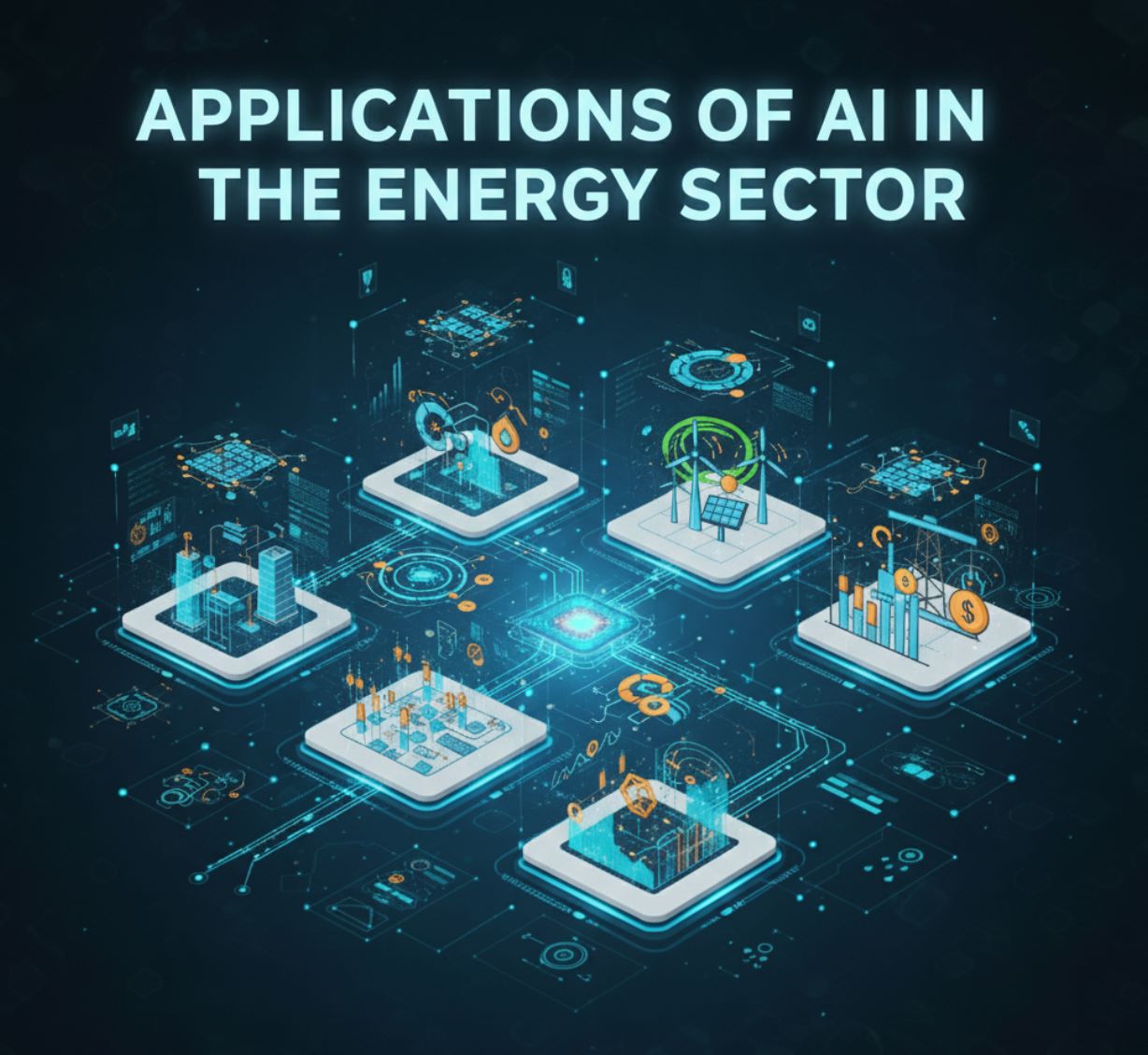
AI in Environmental Conservation
Outside energy, AI is a powerful tool for the environment and climate science. It excels at finding patterns and anomalies in large datasets, making it useful for monitoring, modeling and management.
Climate Modeling
Forest Monitoring
Ocean Cleanup
Precision Agriculture
Disaster Response
Biodiversity Protection
Combining AI with global data can empower better decisions – for example creating early-warning systems for severe weather and sea-level rise to protect over three billion vulnerable people.
— UNESCO AI for the Planet Initiative
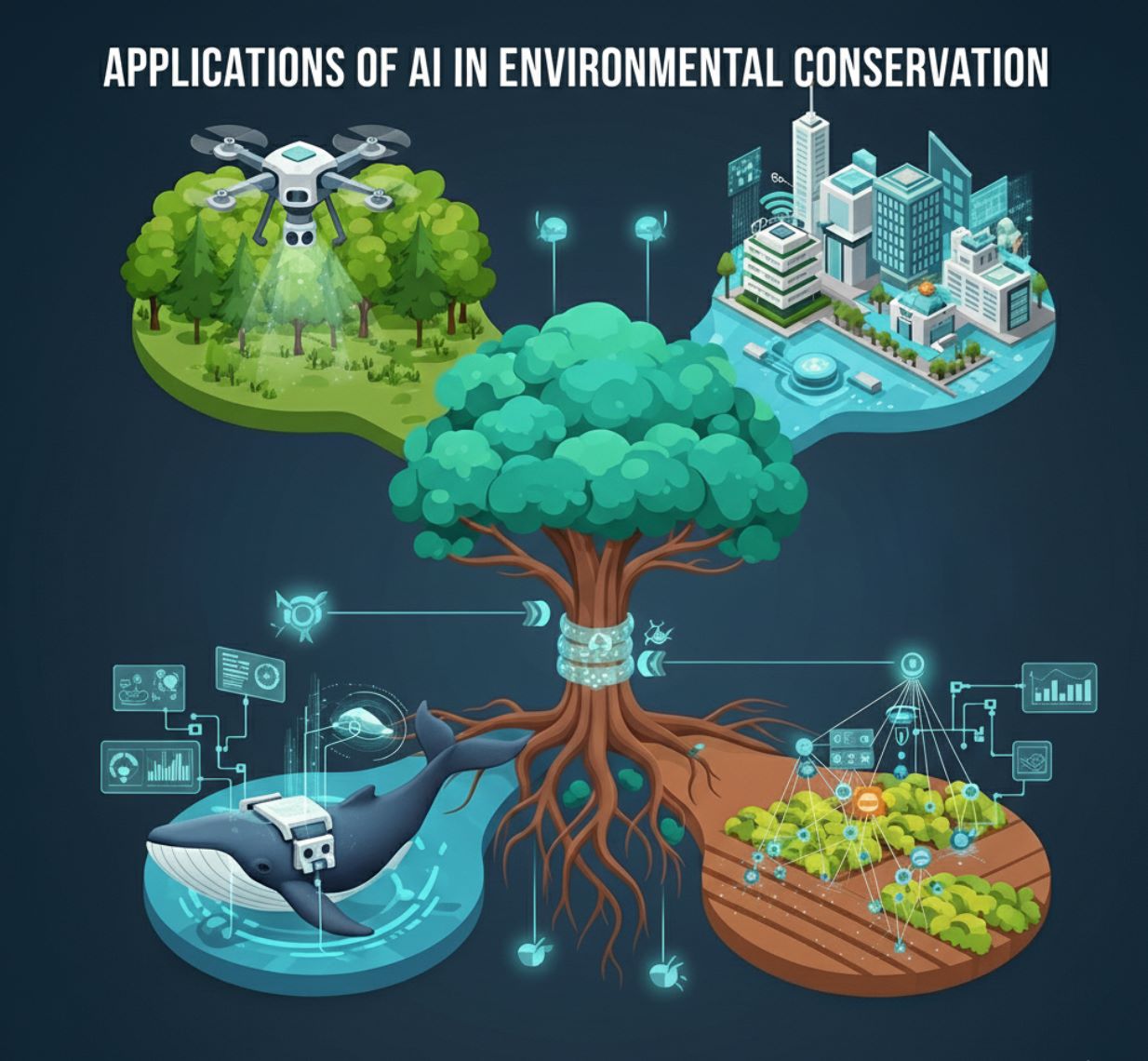
Challenges & Ethical Considerations
Despite its promise, AI also raises important challenges for energy use and the environment. Understanding and addressing these concerns is critical to ensuring AI becomes a net positive force for sustainability.
Energy and Carbon Footprint
Training and running AI models – especially large language models (LLMs) – consumes a lot of electricity. The IEA warns that data centres are among the fastest-growing electricity consumers.
- Generative AI draws power comparable to a small country
- Serving one AI prompt uses ~0.34 Wh
- Over 300 GWh per year globally (equivalent to 3 million people's consumption)
- AI's benefit could far exceed its footprint if barriers are overcome
Resource Consumption
Building and cooling data centres requires raw materials and water. The physical infrastructure supporting AI has significant environmental implications beyond electricity consumption.
Hardware Production
- Hundreds of kg of minerals per computer
- Rare elements like gallium (99% refined in China)
- Growing electronic waste concerns
- Mining environmental impacts
Cooling Systems
- Enormous water volumes for data centre cooling
- AI-related cooling could use 6x Denmark's national water use
- Strain on local water resources
- Need for sustainable cooling alternatives
Equity and Governance Issues
Beyond carbon, AI carries social risks. Automated decision-making in energy and environment must be fair and transparent.
Digital Divide
Ethical Concerns
Collaborative frameworks and regulations will be essential to ensure AI tools truly serve sustainability goals without unintended harm.
— UNESCO AI Ethics Recommendation, 2021
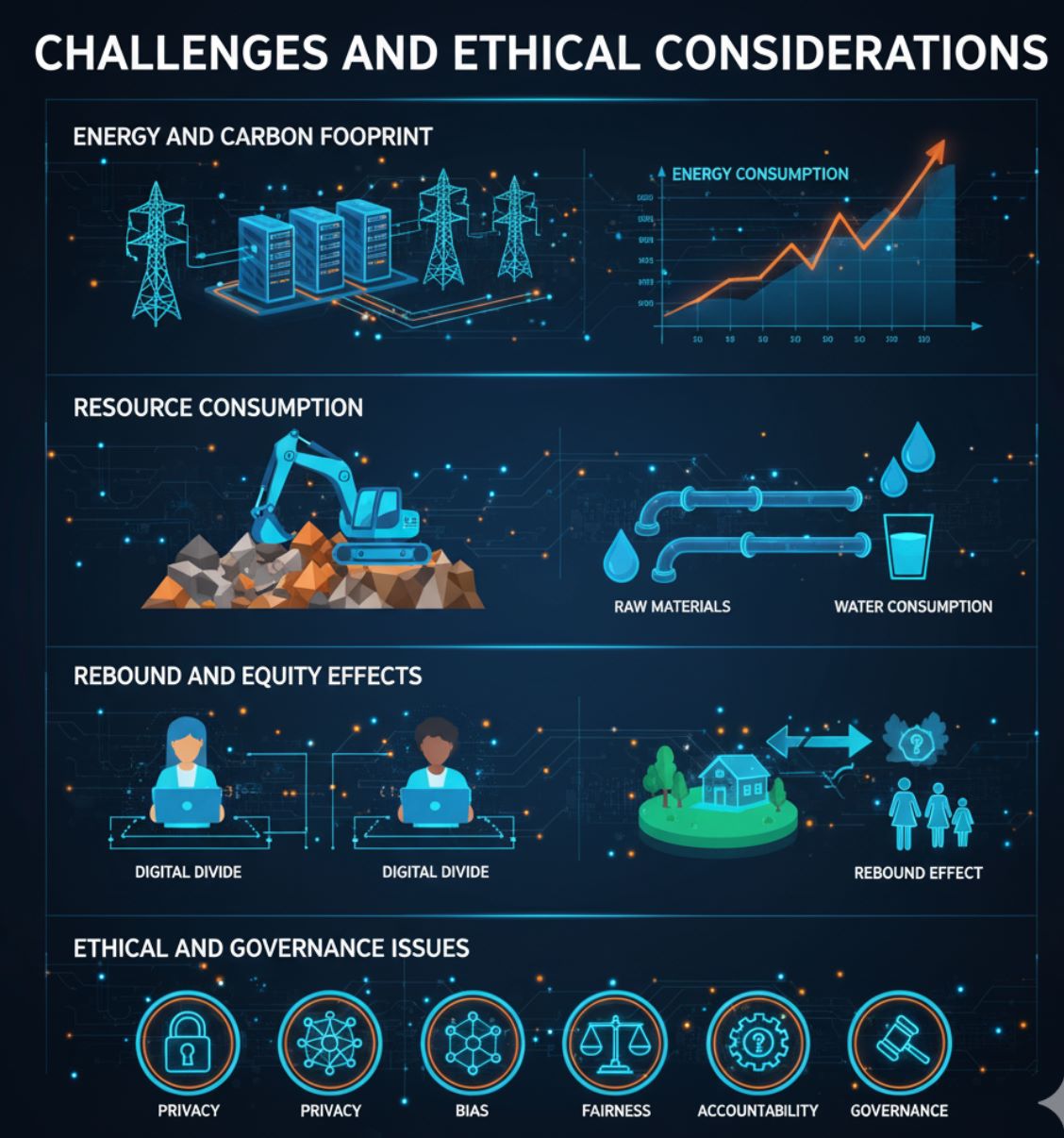
Global Initiatives & Future Outlook
Governments and international bodies are recognizing AI's role in addressing energy and environmental challenges. Coordinated efforts are emerging to maximize benefits while minimizing risks.
U.S. Department of Energy
Launched programs to modernize the grid with AI, highlighting applications in grid planning, permitting and resilience. Even envisions LLMs helping federal reviews.
International Energy Agency
Published global analysis ("Energy and AI", 2025) to guide policymakers on integrating AI into energy systems while managing its environmental footprint.
UNESCO AI for the Planet
Alliance with UNDP, tech partners and NGOs seeks to prioritize and scale AI solutions for climate change, connecting innovations with funding and stakeholders.
The Path Forward
Looking ahead, AI's influence will only grow. Advances like smaller, more efficient models can cut AI's footprint dramatically. At the same time, AI-driven energy solutions (like smart renewables grids and adaptive climate forecasting) offer tools to tackle the climate crisis.
R&D Investment
Continued research into efficient AI models and sustainable computing
Data Sharing
Open data collaboration across borders and sectors
Policy Framework
Responsible policies balancing innovation with sustainability
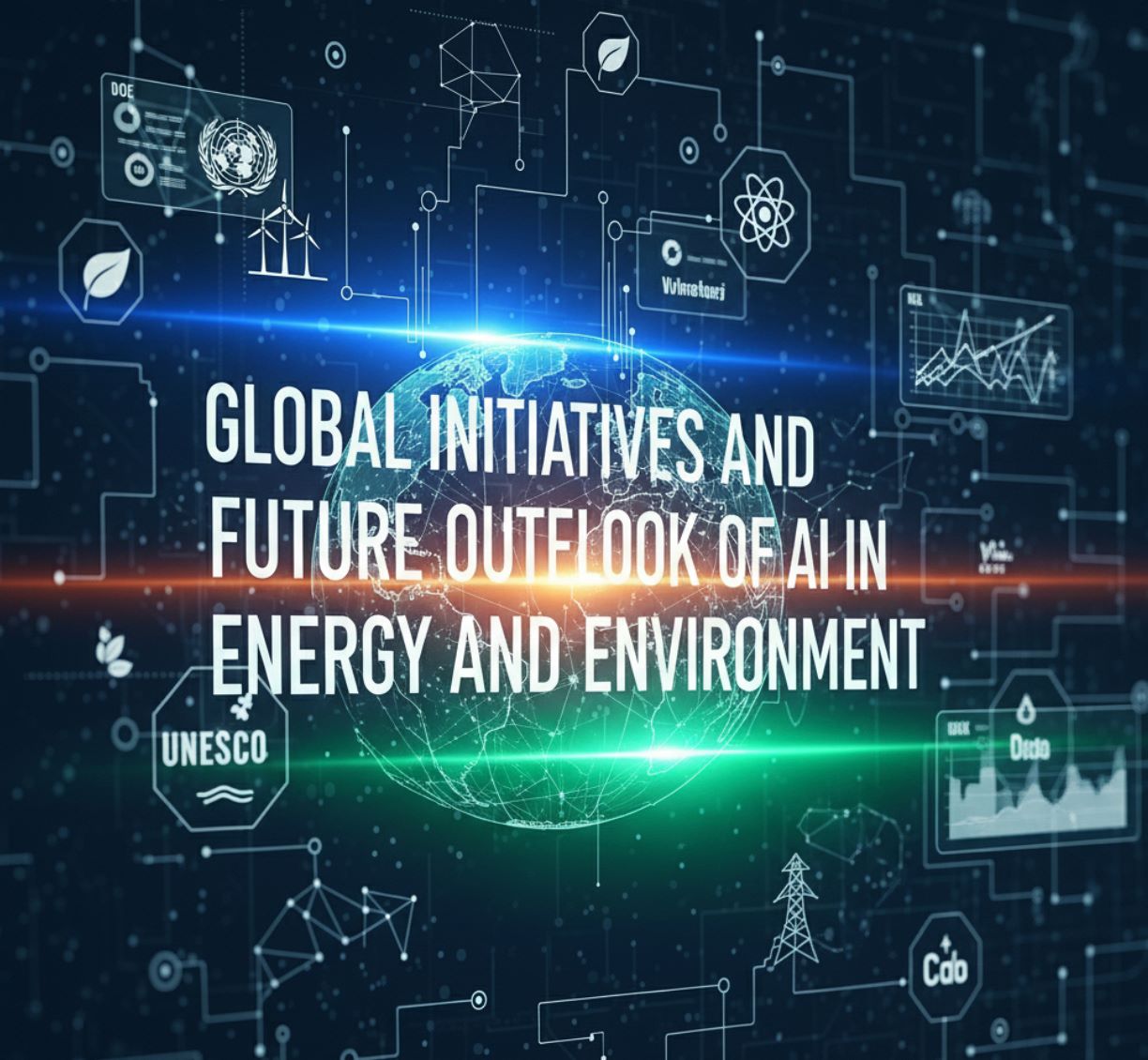
Conclusion
AI is revolutionizing energy systems and environmental science, offering improved efficiency and new insights. However, its rapid growth also consumes energy and resources, raising sustainability concerns.
AI's Environmental Cost
- Growing electricity consumption
- Significant resource requirements
- Water usage for cooling
- Potential rebound effects
AI's Sustainability Potential
- 5% potential CO₂ reduction
- Optimized renewable integration
- Enhanced climate modeling
- Improved resource management
The net impact will depend on managing both AI's demands and its potential: deploying AI to cut emissions and protect ecosystems, while minimizing AI's own environmental footprint.




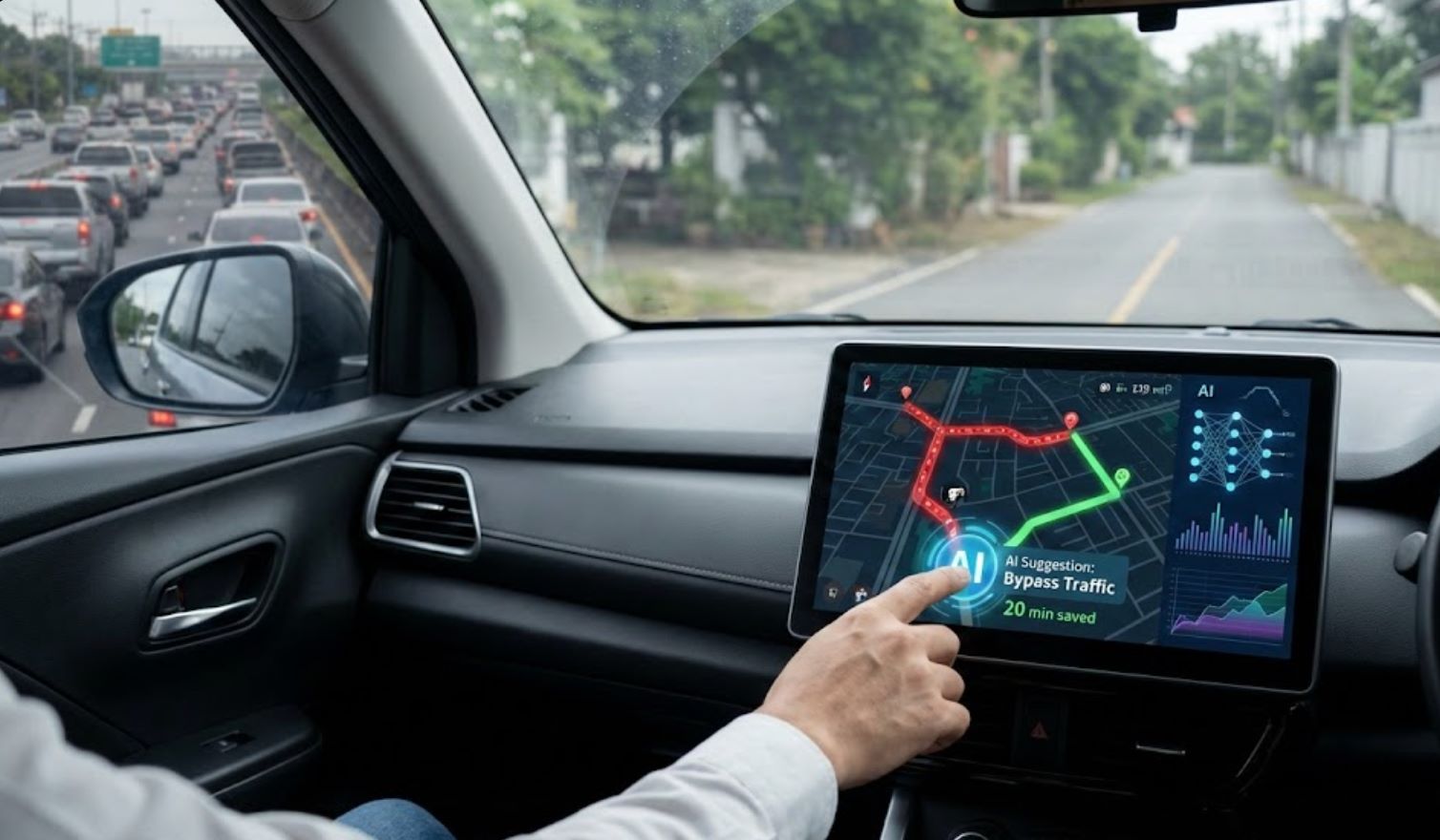

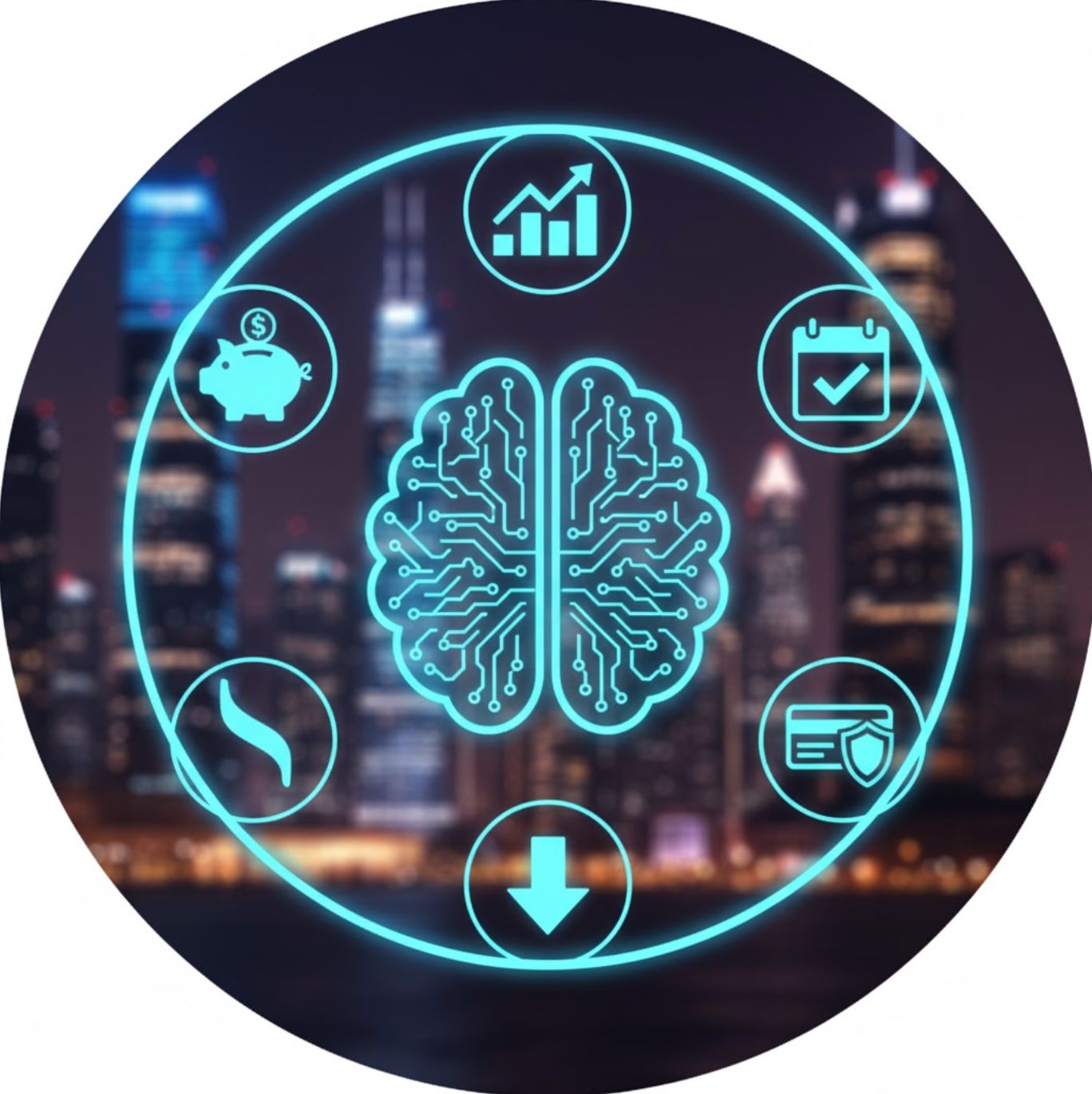
Comments 0
Leave a Comment
No comments yet. Be the first to comment!